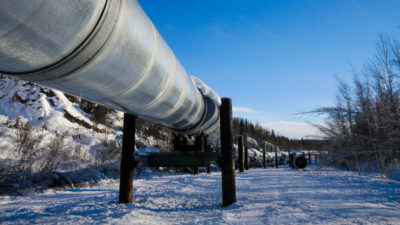In recent days oil has fallen to its lowest price in six years, but Canadian heavy crude, the benchmark price for much of the oil produced from oil sands, has plunged even further and is now at its lowest price in a decade. This doesn’t bode well for Canada’s energy patch and the outlook for oil sands in particular.
For a variety of reasons, I expect sharply weaker oil prices and a range of other factors to make the oil sands more costly to operate to the point where they may no longer be commercially viable.
Now what?
In the past, the low breakeven cost per barrel of established oil sands projects, such as Husky Energy Inc.’s (TSX:HSE) Lloydminster project at US$28 per barrel and Imperial Oil Ltd.’s (TSX:IMO)(NYSE:IMO) Kearl Phase 1 at US$42 per barrel, has allowed them to remain profitable.
It now seems that this will not be case in the future because of the collapse in the price of Canadian heavy crude, which, at $22.50 per barrel, means that many producers are no longer able to cover production and transportation costs. This is lower than its bottom of $24.62 per barrel at the height of the global financial crisis when WTI crashed below US$40 per barrel.
You see, a lack of pipeline capacity to transport Canadian crude south to vital U.S. refining markets is creating a significant bottleneck that is weighing heavily on the price of Canadian crude. Of late, this has been exacerbated by a range of unplanned pipeline and refinery outages that are impacting transportation capacity.
This is applying further pressure to their cost base and making oil sands operations even less commercially viable.
Now, with WTI set to fall even further, the outlook for Canadian heavy crude is quite bleak.
Higher U.S. oil output on a year-over-year basis, along with a recent increase in oil stocks, has worsened an already severe supply glut. Then you have the additional crude that Iran is set to ship because of an easing of economic sanctions after a deal on the restricting of its nuclear program.
There are also a range of domestic issues applying pressure to oil sands operators, the most notable of which are environmental concerns. This includes moves in Alberta to reduce greenhouse emissions by increasing the carbon levy as well as a potential increase in oil royalties, thereby increasing costs at a time when oil prices are plunging to new lows.
So what?
This makes those oil sands projects and operators with high breakeven costs per barrel particularly unattractive investments in the current environment. Among the most vulnerable projects is Fort Hills, which is being developed by a partnership between Suncor Energy Inc., Total S.A. and Teck Resources Ltd., and requires WTI at US$96 per barrel to break even.
The larger integrated energy companies that have diversified oil assets and refining operations that are able to generate higher margins from low oil prices are best positioned to weather the current storm. These include such companies as Suncor, Imperial Oil, and Husky.
It should be noted that Suncor’s breakeven price for its existing oil sands operations is a mere US$30 per barrel, while Imperial Oil has managed to maintain one of the best returns-on-capital-employed in the patch despite the oil crash. This allows both to weather the current harsh operating environment particularly well, and both appear determined to proceed with current projects despite current adversities.
Investors would do best to invest elsewhere because of the high degree of risk and uncertainty surrounding the future of oil.







